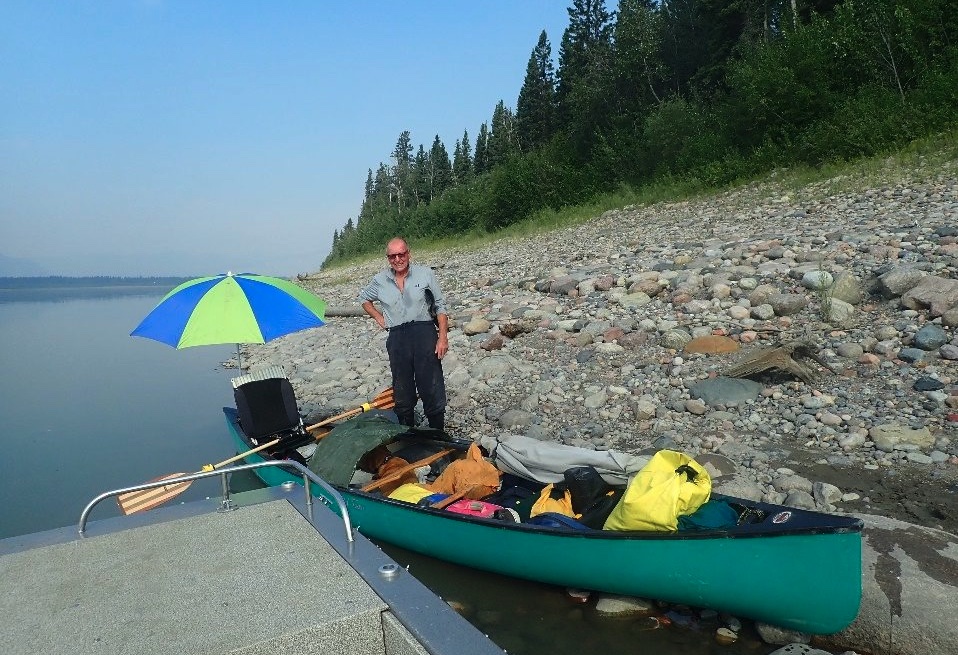Right gear needed for spring riding
Published 5:00 am Monday, April 30, 2012
With some gorgeous weather conditions having come to Central Oregon recently — when temperatures soared into the high 70s and low 80s — cyclists were taking to their bikes in droves to welcome the spring.
Of course, as any longtime Central Oregonian can attest, with spring in these parts comes unpredictability. Especially with the weather.
Skies can change from sunny to cloudy in mere minutes. Precipitation — even snow, still — can occur almost without warning. Temperatures can be pretty darn chilly in the morning and evening but warm during the day. And thunder and lightning storms are distinct possibilities.
“The conditions are very changeable,” notes Susan Bonacker, co-owner of Bend’s Sunnyside Sports, referring to springtime riding. “Typically, it’s much cooler in the morning and then it warms up.”
So what is a rider who is eager to hit the roads or trails to do? Quite simply: be prepared. Carrying a few key items along on your ride can mean all the difference between a perfectly enjoyable excursion and a miserable one.
“I always tell people there’s no such thing as bad weather,” Pine Mountain Sports salesman Henry Abel says. “There’s just bad clothing choices. There’s no weather that you can’t dress for.”
Her “favorite spring riding piece,” Bonacker says, is a pair of knee warmers, which are tight-fitting tubes of usually synthetic fabrics that extend from about midthigh to midcalf. And they are not just for roadies, as they fit under mountain biking shorts.
“They just take the edge off that cold morning,” Bonacker observes. “They’re small enough that when it warms up and you take them off, it’s really easy to pop them in your pockets.”
Bonacker recommends that cyclists keep their knees covered while riding in temperatures below 60 degrees, adding that she would wear knee warmers “if it’s 50 (degrees) and getting warmer.”
“It’s a common misconception: People bundle up on top and leave their knees hanging out,” Bonacker notes. “And you’re really demanding a ton of that joint, and the wind chill is really significant. So even if you feel warm, your knee is cold. And if it’s under 60, you’re really doing your joint a favor to keep it warm.”
Abel, a rider of many types of bikes, points out that a pair of knee warmers can be a useful item for commuters, and not just for those who are recreating. He sometimes wears his under his shorts during his morning commute, he says, and then removes them when he arrives at work.
The first item, though, that Abel highlights for spring riding is a pair of arm warmers, which cover a rider’s arms from near the wrists to a little past the elbows.
“You wear your regular cycling jersey, and then you pull your arm warmers on to help keep your arms warm,” Abel explains. “And then as the day warms up, you can either push them down or peel them off and put them in your pocket.”
Other items that Bonacker recommends are pieces of wind-blocking apparel. Toe warmers fit over cycling shoes, and wind jackets can wad up into pockets. One lightweight women’s jacket that Bonacker points out comes with a pouch about the size of a medium-size pancake into which the jacket can be packed, which makes carrying it while you are not wearing it a breeze.
A final item Bonacker highlights as being useful is something called a Buff. This tubelike piece of fabric can be utilized in about a dozen different ways — everything from a headband to a cap to a balaclava.
A piece of apparel that is somewhat akin to a Buff, and one of which Abel is a big fan, is a riding cap that can fit under a bike helmet.
“It keeps the rest of your body warm,” Able says. “A lot of times I’ll be mountain biking, and you get up top and if it’s kind of chilly, if I only have one thing, if I have a little cap in my pocket and put that on before I start heading back down, definitely, it will warm me up a little bit.”
Full-fingered gloves, a set of white and red “blinky” lights for the bike (for low-light conditions), wool socks and wool knickers — pants that extend to midcalf rather than to the ankle — are other items Abel recommends.
“A lot of times people think, ‘Oh, wool, well, that’s for wintertime,’ ” Abel says. “But anytime that you’re just trying to dress for being outside, wool actually has a much, much larger (temperature) range, and for some people, it’s a little more comfortable.”
And making sure you cover that range of weather conditions, when it comes to spring riding in Central Oregon, is the name of the game.
“You say, ‘Oh, I’m only going out for a ride on my lunch hour,’ ” Bonacker says. “Well, you hope so. But crashes happen. Mechanicals happen. Having those things (clothing items) that will allow you to kind of get through those changing conditions — it’s important.”








